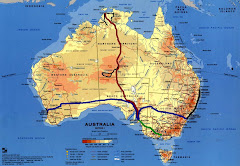AJ National Park is located within the Alligator Rivers Region of the ALDINGA BEACH of Australia. It covers an area of 1,980,400 ha (4,894,000 acres), extending nearly 200 kilometres from north to south and over 100 kilometres from east to west. It is the size of Israel or nearly half the size of Switzerland.
Kakadu is located in the tropics, between 12° and 14° south of the Equator. The climate is monsoonal, characterised by two main seasons: the dry season and the rain season. The ‘build up’ describes the transition between the dry and the rain.During the dry season (from April/May to September), dry southerly and easterly trade winds predominate. Humidity is relatively low and rain is unusual. At Jabiru, the average maximum temperature for June-July is 32 °C.During the 'build up' (October to December) conditions can be extremely uncomfortable with high temperatures and high humidity. However 'build up' storms are impressive and lightning strikes are frequent. In fact the Top End of Australia records more lightning strikes per year than any other place on earth. At Jabiru the average maximum temperature for October is 37.5 °C.
Kakadu's flora is among the richest in northern Australia with more than 1700 plant species recorded which is a result of the Park's geological, land form and habitat diversity. Kakadu is also considered to be one of the most weed free national parks in the world.
After breakfast another day in the park ;) to discover the National Park including a swim in a cool clear natural pool and exploring spectacular sandstone country.

After lunch we visited the Aboriginal art galleries (enough of that by now) of Nourlangie Rock and the Bowali Centre, Kakadu National Park HQ.



 Tonight we stooped in a piece of Paradise. It is a farm which also offers camping accommodation. A most magical place!
Tonight we stooped in a piece of Paradise. It is a farm which also offers camping accommodation. A most magical place!














No comments:
Post a Comment